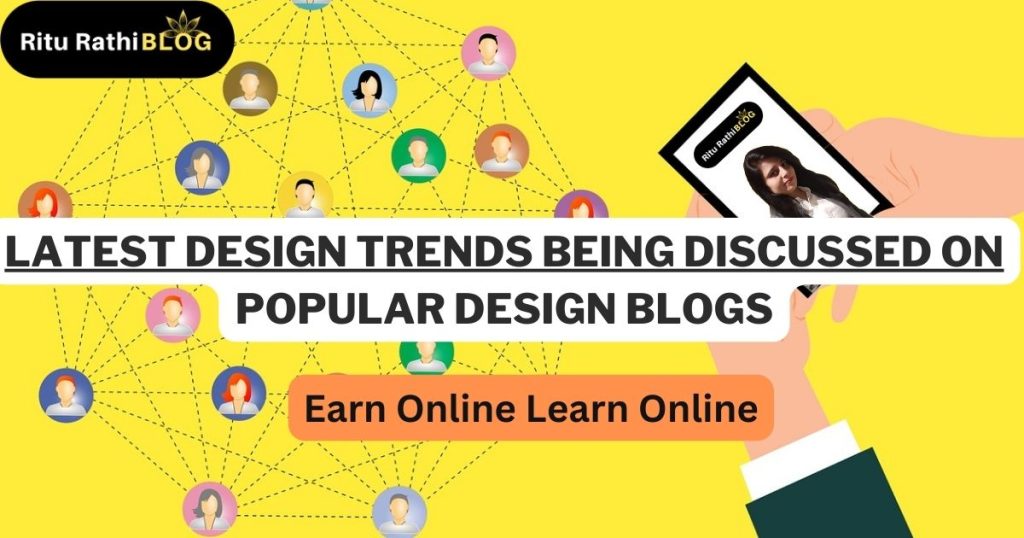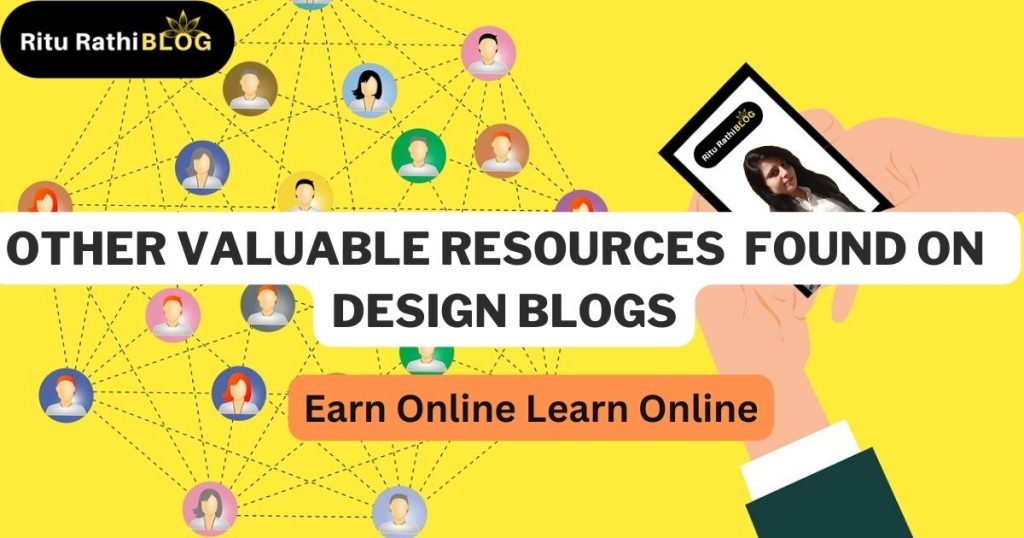Design blogs offer a wealth of inspiration, resources, and industry insights for designers and enthusiasts alike. With countless design blogs available on the internet, it can be difficult to know where to turn for the most influential and informative content.
In this article, we will explore some of the most popular and influential design blogs across various genres, including graphic design, web design, interior design, fashion design, and more. Whether you are seeking inspiration for your next project, keeping up with the latest design trends, or looking to learn new skills, these design blogs are sure to offer valuable resources and inspiration.
Let’s understand about Design Blogs using 4 trending and most asked questions :
What are the top design blogs to follow for inspiration and industry insights?
Design is an ever-evolving field that requires constant exploration and inspiration. Whether you are a professional designer or someone who loves to dabble in design, keeping up with the latest trends, techniques, and insights can be essential to creating successful designs.
Fortunately, there is a wealth of information available online through design blogs that offer a glimpse into the minds of industry experts and showcase the best in design from around the world.

In this article, we will know about 8 such design blogs and here are the websites and their owners :
1. Smashing Magazine (https://www.smashingmagazine.com/) –
This is one of the most popular design blogs on the internet. It is owned by Vitaly Friedman and based in Germany. Smashing Magazine features articles on web design, graphic design, user experience, and more.
2. Creative Bloq (https://www.creativebloq.com/) –
Creative Bloq is a design blog owned by Future Publishing in the UK. It covers a wide range of design topics including web design, graphic design, 3D design, and more. It is an excellent source for design inspiration and industry news.
3. A List Apart (https://alistapart.com/) –
A List Apart is a design blog focused on web design and development. It features articles written by industry experts and covers topics such as responsive design, accessibility, and more. It is owned by Zeldman Design in the USA.
4. Design Milk (https://design-milk.com/) –
Design Milk is a design blog that covers a wide range of design topics including architecture, interior design, furniture, and more. It is owned by Jaime Derringer in the USA.
5. Dezeen (https://www.dezeen.com/) –
Dezeen is a design blog based in the UK that covers architecture, interior design, and product design. It features articles written by industry experts and is a great source for design inspiration and news.
6. Design Observer (https://designobserver.com/) –
Design Observer is a design blog that covers a wide range of design topics including graphic design, product design, and more. It is owned by William Drenttel and Jessica Helfand in the USA.
7. Eye on Design (https://eyeondesign.aiga.org/) –
Eye on Design is a design blog owned by AIGA in the USA. It covers a wide range of design topics including graphic design, typography, and more. It features articles written by industry experts and is an excellent source for design inspiration and news.
8. Designboom (https://www.designboom.com/) –
Designboom is a design blog based in Italy that covers a wide range of design topics including architecture, product design, and more. It is owned by Birgit Lohmann and Massimo Mini in Italy.
How can one start their own design blog and establish a following in the design community?
Starting a design blog can be an excellent way to share your creativity, showcase your work, and build a following in the design community.

Here are 10 step-by-step guide to help you start your own design blog:
1. Choose your niche:
Decide what type of design you want to focus on. It could be graphic design, web design, interior design, fashion design, etc.
2. Define your target audience:
Determine the group of people you want to target with your blog. Knowing your audience will help you tailor your content to their needs and interests.
3. Choose a name:
Pick a name for your blog that reflects your niche and is memorable and easy to spell.
4. Purchase a domain name:
Choose a domain name for your blog and purchase it from a domain registrar. Try to pick a name that reflects your brand and is easy to remember.
5. Choose a blogging platform:
Select a blogging platform that suits your needs. Some popular options are WordPress, Squarespace, and Wix.
6. Set up your blog:
Customize your blog’s appearance by choosing a theme, adding your logo and branding, and creating pages such as an about page and contact page.
7. Create content:
Start creating content for your blog that is informative, engaging, and relevant to your audience. You can write tutorials, share your work, provide industry news, or give tips and advice.
8. Promote your blog:
Share your blog on social media platforms like Twitter, Instagram, and Facebook. Reach out to other bloggers and designers in your niche, and ask them to share your content.
9. Build a community:
Engage with your readers by responding to comments and encouraging feedback. Encourage guest posts and collaborations with other bloggers and designers in your niche.
10. Analyze and improve:
Track your blog’s performance using tools like Google Analytics. Analyze your data to see which posts are performing well, and use this information to improve your content.
Starting a design blog takes time and effort, but with patience and dedication, you can build a following and establish yourself as a respected voice in the design community.
What are some of the latest design trends being discussed on popular design blogs?
Some of the design trends that were being discussed on popular design blogs at that time.

Here are 9 top and latest design trends that were popular:
1. Dark mode:
More and more websites and mobile apps are offering dark mode options to reduce eye strain and conserve battery life. Designers are experimenting with dark color palettes and bold typography to create striking designs.
2. Sustainability:
With an increased focus on environmental issues, designers are incorporating sustainable design practices into their work. This includes using recycled materials, reducing waste, and creating designs that are more environmentally friendly.
3. Minimalism:
Clean and simple design continues to be popular, with designers using minimalism to create elegant and sophisticated designs. Minimalism focuses on using negative space, simple typography, and limited color palettes to create impactful designs.
4. Bold typography:
Typography is becoming more prominent in design, with designers using bold fonts to create eye-catching designs. This includes custom fonts, handwritten fonts, and oversized typography.
5. 3D design:
3D design is becoming more accessible, with designers incorporating 3D elements into their work. This includes 3D graphics, animations, and product designs.
6. Voice interfaces:
With the rise of voice assistants and smart speakers, designers are incorporating voice interfaces into their work. This includes designing voice user interfaces (VUIs) that are intuitive and easy to use.
7. Inclusive design:
Inclusive design is becoming more important, with designers creating designs that are accessible to people with disabilities. This includes using alt tags for images, creating high-contrast designs, and designing for screen readers.
8. Gradients:
Gradients are making a comeback in design, with designers using bold and vibrant color gradients to create dynamic designs. This includes using gradients in backgrounds, typography, and illustrations.
9. Abstract design:
Abstract design is becoming more popular, with designers using abstract shapes and patterns to create unique and artistic designs. This includes using geometric shapes, organic forms, and abstract illustrations.
These are just a few of the design trends that were popular at the time. Design trends are constantly evolving, so it’s important for designers to stay up-to-date with the latest developments and adapt their work accordingly.
What other valuable resources can be found on design blogs such as tutorials, tools, and industry news?
Design blogs are not just a source of inspiration for designers; they offer a wealth of valuable resources that can help designers improve their skills, stay up-to-date with the latest trends, and gain insights into the design industry.
Along with design inspiration, tutorials are one of the most valuable resources that design blogs offer. Tutorials can teach designers how to use different design software, tools, and techniques, from beginner-level to advanced, helping them improve their skills and stay up-to-date with the latest design trends.

Here are some other valuable resources that can be found on design blogs:
1. Tutorials:
Many design blogs offer tutorials that teach readers how to use different design software, tools, and techniques. These tutorials can range from beginner-level to advanced and can help designers improve their skills and stay up-to-date with the latest design trends.
2. Tools and resources:
Design blogs often provide reviews of different design tools, resources, and software that can help designers with their work. This includes design templates, plugins, and stock photos, which can help designers save time and improve their workflow.
3. Industry news:
Design blogs often cover the latest news and developments in the design industry, including changes in design trends, new design software and tools, and updates on the design world’s top designers and agencies. This can help designers stay up-to-date with the latest developments in the industry and adapt their work accordingly.
4. Interviews and profiles:
Many design blogs feature interviews with prominent designers and agencies, providing insight into their creative process and offering tips and advice for aspiring designers. These profiles can also be a source of inspiration and motivation for designers.
5. Design thinking and strategy:
Design blogs also cover topics related to design thinking and strategy, such as user experience (UX) design, branding, and marketing. These articles can help designers better understand how their work fits into a larger context and how design can be used to solve business problems and achieve strategic goals.
Overall, design blogs offer a wealth of resources and information that can help designers improve their skills, stay up-to-date with the latest trends, and gain insights into the design industry.
**** Thanks for reading and enjoy reading our recent blogs ****
Recent Blogs
- Popular Hostinger Hosting Pricing and Complete Review
- Discover the Top 7 Hosting Providers in the USA
- Best PebbleHost Server: For High-Performance Minecraft Gaming
- 15 Reasons: Why is consistency in content creation is important?
- 6 Best End of Tenancy Cleaning in London
Disclaimer
The information provided in this blog is for general educational and informational purposes only and should not be considered professional advice. The views and opinions expressed in this blog are solely those of the author and do not necessarily reflect the views of the company or its affiliates. The author is not responsible for the accuracy, completeness, or reliability of the information contained in this blog and will not be liable for any errors, omissions, or damages arising from the use of this information. Readers should always seek professional advice before making any decisions related to influencer marketing.
